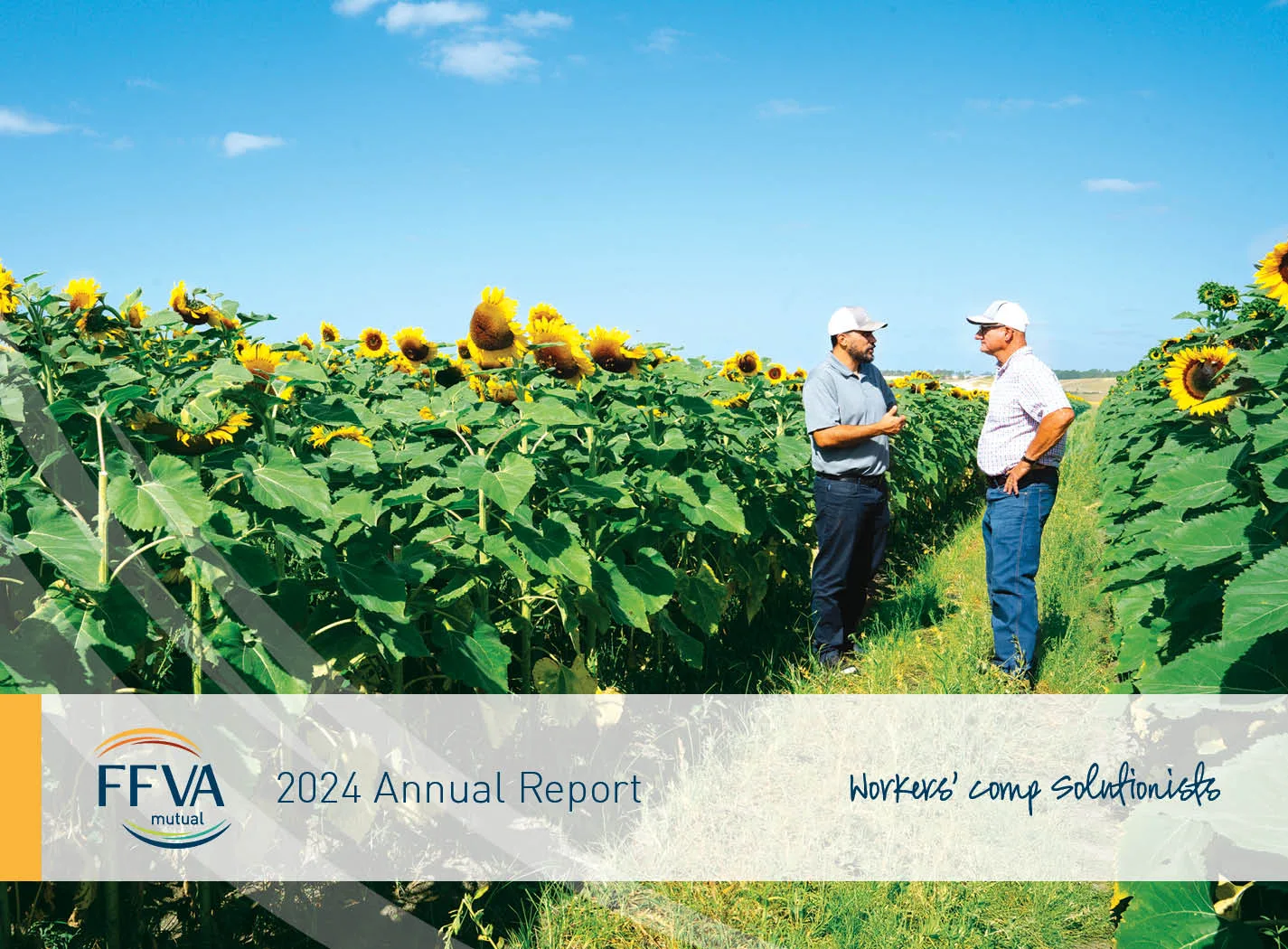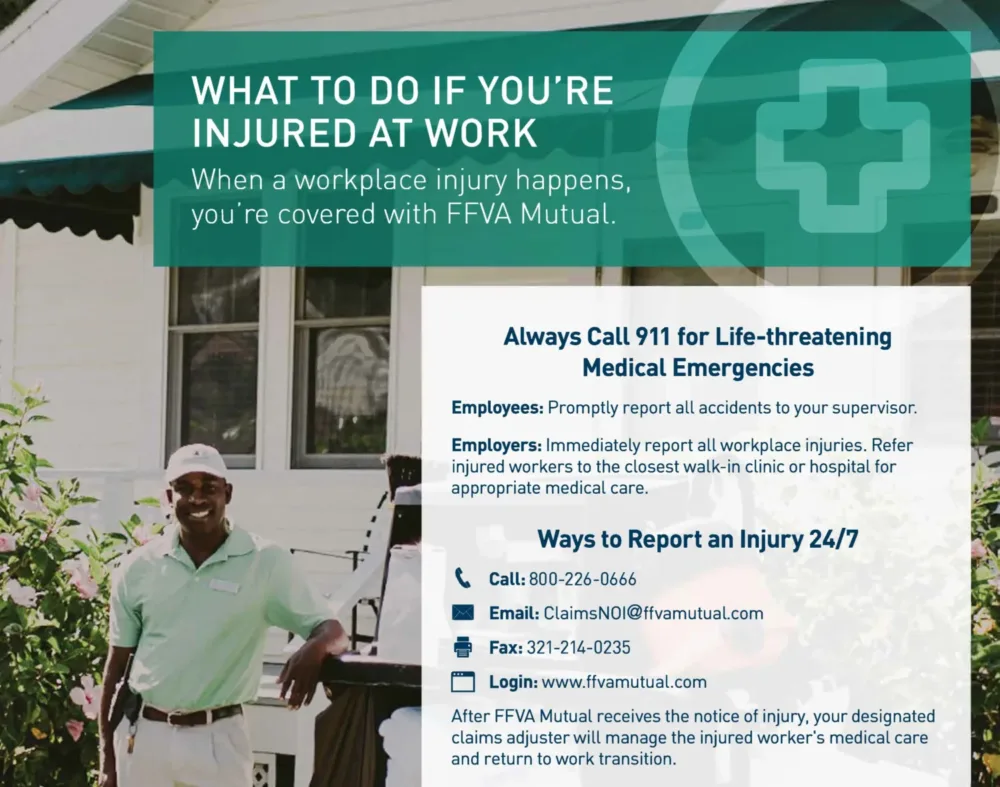Every job carries some level of risk, but not all risks are equal — and neither are the premiums tied to them. That’s where workers’ comp class codes come in. Class codes are the foundation of how workers’ compensation insurance premiums are calculated. Each code assigns a numeric classification to a specific type of work based on its risk exposure. These codes help insurers assess potential liability, apply accurate comp insurance rates and ensure employers are charged fairly based on the actual work performed.
When a code is wrong, costs can rise quickly. A clerical office employee classified as a field technician, for instance, could inflate your premium with no added benefit. Conversely, an underclassified high-risk job could lead to coverage issues or costly audits.
Working with a knowledgeable carrier like FFVA Mutual can help you stay aligned with your responsibilities, avoid misclassification and manage premium risk from the start. Not sure how class codes fit into the bigger picture of how workers’ comp works? Or how class codes relate to your claims process? We’re here to help.
What Are Workers’ Compensation Class Codes?
Workers’ compensation class codes are four-digit numeric identifiers assigned to job roles based on their risk of injury. Also referred to as classification codes or comp codes, they serve as a standardized system for rating jobs by hazard level. These codes are used by carriers to determine premium rates for workers’ compensation coverage and ensure consistent pricing across industries.
For example:
- A clerical office employee typically falls under class code 8810, reflecting minimal physical risk.
- A mechanic working in an automobile repair shop may fall under class code 8380, which carries a much higher exposure to injury due to the exposure to tools, chemicals and machinery.
The system is not arbitrary. Codes are based on years of injury and claims data collected by governing organizations like the National Council on Compensation Insurance (NCCI). The goal is to make workers’ comp pricing more equitable by aligning premiums with real-world job risks.
Each class code directly impacts how much an employer pays per $100 of payroll. The higher the risk, the higher the assigned rate. When employers are assigned the correct class code, they pay premiums that accurately reflect the risks of their workforces. If they’re not, it often leads to overcharges or compliance issues.
Understanding these classifications, and reviewing them regularly, is an essential part of managing workers’ compensation costs.
Who Determines Workers’ Comp Class Codes?
In most states, the NCCI is the authority responsible for developing and maintaining the classification system used in workers’ comp rating. The NCCI assigns, defines and updates workers’ compensation class codes based on statistical data collected from across the country.
Each year, NCCI reviews claims frequency, loss severity and job risk trends to adjust or reclassify existing codes. This ensures that workers’ compensation rates reflect current realities, not outdated assumptions.
That said, not all states follow the NCCI model. Some states — including California, New York, North Carolina and others — have independent rating bureaus and may use a different classification code framework.
Regardless of who governs the system, the outcome is the same: a structured, data-backed system used to categorize jobs and determine how workers’ compensation insurance premiums are set.
How Workers’ Comp Class Codes Are Assigned
Assigning the right workers’ comp class code starts with understanding what your business does and how your employees perform their jobs. Insurers typically begin with a governing classification — the main code that reflects your core operations. From there, they determine whether any roles require multiple class codes based on differing job duties and levels of workplace exposure.
For example, a supervisor falls under 5606 and administrative staff under 8810. Each group performs different tasks and faces different levels of risk, so each receives a distinct classification.
To assign codes, insurers use:
- Job descriptions
- Payroll divided by job type
- Supervision structures
- Site visits or audits
If there’s a gray area, insurers often default to the highest-risk classification. That’s why accurate classification is essential. Errors can lead to overpaying premiums or insufficient workers’ compensation coverage.
Annual audits verify reported data and may uncover discrepancies. Misreporting can result in backdated premium adjustments, penalties or denied claims.
Not sure which class codes apply to your team? Your insurance agent or carrier will typically provide these during the quoting or renewal process. They rely on industry standards, job descriptions and payroll divisions to make accurate assignments.
Common Workers’ Comp Class Codes and What They Mean
Understanding common class codes can help employers recognize potential misclassifications. Here are some widely used examples:
Code 5537: Heating, Ventilation, Air-Conditioning and Refrigeration
Covers installation, repair and maintenance work involving HVAC systems. Includes exposure to tools, wiring and rooftop work.
- Risk level: High
Code 8380: Automobile Service or Repair Center
Includes mechanics and service techs working on vehicle diagnostics, repairs or maintenance. Involves physical labor and equipment exposure.
- Risk level: High
Code 5183: Plumbing, Not Otherwise Covered (NOC) and Drivers
Includes general plumbing installation and repairs, often involving tight spaces and physical labor.
- Risk level: Moderate to High
Code 9102: Lawn Maintenance, Commercial or Domestic
Applies to crews providing mowing, trimming and groundskeeping services. Includes exposure to outdoor elements and power tools.
- Risk level: Moderate
Code 5474: Painting, NOC and Shop Operations
Assigned to workers involved in indoor/outdoor painting projects or prep work.
- Risk level: Moderate
Code 2883: Furniture Manufacturing and Cabinet Shop – Wood
Assigned to woodshop employees involved in cutting, assembling and finishing furniture.
- Risk level: High
Code 8835: Home, Public and Traveling Healthcare – All Employees
Covers in-home care workers, nurses and aides delivering healthcare services outside a clinical setting.
- Risk level: Moderate to High
Code 9014: Janitorial Services by Contractors
Applies to contractors providing general janitorial services. Excludes window cleaning above ground level.
- Risk level: Moderate
Code 8742: Outside Salespersons or Collectors
Used for employees who work away from the office, such as field sales representatives or collectors.
- Risk level: Moderate
Code 2759: Box or Box Shook Manufacturing
Applies to production workers in packaging and container manufacturing facilities.
- Risk level: Moderate
Code 5606: Executive Supervisors / Project Managers
Covers managers who visit job sites but don’t perform physical work. They may oversee operations, conduct walkthroughs or hold meetings.
- Risk level: Moderate
Code 8810: Clerical Office Employees
Used for administrative staff who work exclusively in a traditional office setting with no physical labor or field exposure.
- Risk level: Low
Code 8742: Outside Salespersons
Applies to employees who work outside the office, such as traveling sales reps. Though not physically demanding, such a role involves workplace exposure to driving-related risks.
- Risk level: Moderate
Understanding the difference between code 8810 and 8742 is particularly important. The clerical classification only applies if the employee has no field duties. Misapplying these can result in audits or denied claims.
How Class Codes Affect Workers’ Comp Costs
Every class code is assigned a rate per $100 of payroll, based on the job’s risk level. High-risk roles carry higher rates. For example, a roofer will cost significantly more to insure than an office worker.
Beyond base rates, workers’ compensation insurance costs are adjusted through NCCI’s Experience Rating Plan. This formula compares expected losses to actual claims:
- More claims than average = debit mod (>1.00) = higher premium
- Fewer claims than average = credit mod (<1.00) = lower premium
This makes accurate classification even more important. If a low-risk employee is classified as high-risk, you’ll pay more than necessary. If a high-risk role is underclassified, you may be underinsured and exposed to audit penalties.
Best Practices for Employers
To prevent misclassification and manage workers’ compensation rates, employers should:
- Keep job descriptions current and specific to actual duties
- Separate payroll by function for roles with multiple responsibilities
- Use the Experience Rating Adjustment (ERA) to limit the impact of medical-only claims
- Partner with a knowledgeable carrier that understands the nuances of classification codes, audits and claims history
These best practices help ensure you’re using the correct class code, staying compliant and avoiding unnecessary costs tied to misclassification.
Building Your Policy on the Right Classification
Getting class codes right from the start helps ensure your policy reflects your true exposure and operations. Even minor misalignments between job roles and classifications can impact premiums or audits over time.
At FFVA Mutual, we help employers assign accurate class codes, manage classification audits and optimize their entire workers’ compensation insurance program. Whether you’re reviewing current assignments or responding to a potential misclassification, we’re here to help.
Ask a safety question or explore claims management solutions today.






























